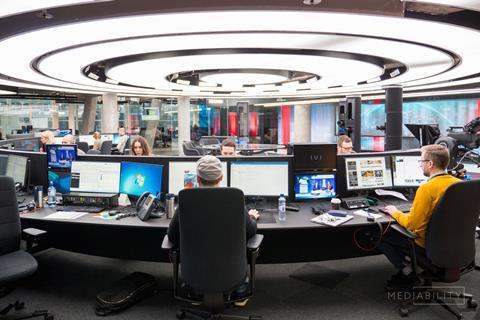A changing industry, with increased demand for video from a wider array of organisations, has fueled the need for a different breed of broadcast solutions provider, writes Håvard Myklebust.

An increased demand from organisations to create more content than ever, and rapid advances in technology have resulted in massive disruption within the content production industry.
Because of this, it’s more important than ever for systems integrators to keep up with new trends and technology and ensure operations are future proofed.
Content producers now need a partner who can offer more than the traditional SIs. They need partnerships that offer ongoing training and support while making sure they’re able to get the most out of kit.
From Mediability’s base in Scandinavia, we’ve seen demand rising because of these trends and have created a team to support it.
Many of the traditional systems integrators are now having to adapt to change and learn about new technologies because they need to create new kinds of workflows.
The changing nature of technology is having a big impact on, and bringing about new opportunities for, solutions providers but that’s not the only factor.
In Scandinavia, we’ve experienced a lot of demand for solutions because the need for video itself is increasing and not just from the traditional broadcasters or production houses.
Now, organisations like universities, government agencies, newspapers and houses of worship all have a common denominator – everyone is creating video content and sharing or publishing it on multiple platforms. And with the tools that are available today, it’s easier than ever for anyone to do it.
And this idea that broadcast is no longer reserved for the broadcasters is spilling over into the UK market, where we recently set up a new office to access additional markets and continue to support this change in demand across the industry.
It’s because of this that there is currently huge demand for lower-cost workflows for content production and publication that are easy to implement and operate.
The areas we serve in Scandinavia and the UK, Europe and the Middle East need facilities providers that can deliver the knowledge and experience required in new verticals to provide the right advice and training on systems that allow for the easy production of media content.
There’s currently a clear gap in the industry between the workflows being designed and the workflows being built. Systems integrators now play an integral part in putting together the processes a media producer uses to execute their overall production services instead of simply giving them some cameras, a switcher and some graphics tools.

They need to really understand a client’s needs and how they operate in order to recommend or build systems that best suit them.
If a content producer has to operate an infrastructure that doesn’t provide a good ROI or give them the best possible operating experience, then it isn’t right for them.
So, at a time where it seems like new technologies are introduced every week, SIs – or any kind of facility providers – need to stay ahead of the game, providing expert advice on all kinds of solutions whether cloud-based, IP-connected, software-centric or increasingly, virtualised.
As a facilities provider, we’re always asked about the key themes and topics in the industry.
From our perspective, it’s obvious that the big transition to IP-based and virtualised solutions will happen much quicker than initially thought. And this is because no one can afford to wait around.
The demand for content is such that IP-centric workflows are being put in place now, with many making sure they are futureproofing themselves.
And with new kinds of organisations entering the market, like Expressen – a Swedish newspaper for which we delivered a broadcast-grade studio - software-as-a-service offerings are also increasingly becoming more attractive than buying equipment outright.
The ability to turn on or off a subscription is advantageous for these content producers because they need workflows that create professional, broadcast-grade content but aren’t in a position to output as much as a traditional media facility.
The industry’s live productions are also evolving because of new events beyond the main televised sports kinds of events attracting audiences. For example, e-sports and gaming are now being delivered in a much more professional way than we’ve ever seen before. And this is only going to improve.
At the same time we’ll see a focus on creating more with less.
Content producers – whether classed as traditional or non-traditional – are having to compete fiercely for viewers’ attention because of the sheer amount and variety of engaging programming available.
Håvard Myklebust is Chief Executive of Mediability.



























No comments yet